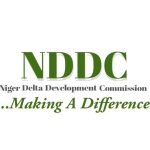Explainer: What options do African nations have to finance climate, nature?
September 4, 2023
At the African Climate Summit this week, national leaders meet to discuss how to fund the challenges posed by climate change and biodiversity loss.
Deals worth hundreds of millions of dollars are expected to be signed at the three-day conference in Nairobi that began on Monday, although the total is set to remain a long way short of what is needed.
Below are some of the various ways in which countries can finance protection of their natural resources – and the potential hurdles to scaling them quickly:
WHAT FUNDS DOES AFRICA NEED TO MEET CLIMATE GOALS?
Top multilateral development banks (MDB) such as the World Bank, European Investment Bank and African Development Bank are funneling increasing amounts of money into renewable energy and other sustainable finance projects in Africa, but their efforts need to increase massively.
The Climate Policy Initiative estimates that the continent needs $277 billion annually to implement ‘nationally determined contributions’ to meet 2030 climate goals. Annual climate finance flows in Africa stand at only $30 billion at the moment, however.
Another recent report co-authored by executive secretary at the UN Economic Commission for Africa, Vera Songwe, concluded that MDBs yearly climate finance must triple within five years, from $60 bln to $180 bln, to help developing economies globally cope with global warming.
More than 800 million people are now classed as food insecure. The African Development Bank (AfDB) estimates that loss and damage costs due to climate change in its region are between $289.2 billion to $440.5 billion and that an 1°C increase in temperature is also associated with a greater probability of conflict in the region of approximately 11%.
The International Monetary fund also estimates that 34 of 59 developing economies most vulnerable to climate change, many or which are in Africa, are also at a high risk of fiscal crises.
HOW IS AFRICA DEVELOPING CARBON AND BIODIVERSITY OFFSETS?
Matching up owners of projects that lock climate-damaging carbon away or protect biodiversity with those keen to offset damage or emissions in another area is seen as a one way to help raise cash, although the markets are nascent.
Many African countries, particularly those rich in forests, are already raising cash by selling voluntary carbon credits and plan to scale up sales over the coming years.
The countries hope demand for carbon offsets – credits for emissions-reducing activity that can be generated through projects such as tree planting – will increase as companies with net-zero goals buy them to cancel out emissions elsewhere.
The African Carbon Market Initiative (ACMI), comprised of several nations including Kenya, Malawi, Gabon, Nigeria and Togo, was launched at the U.N. COP27 climate summit last year and aims to increase the number of carbon credits generated on the continent to around 300 million credits by 2030 and 1.5 billion a year by 2050.
This, the ACMI said could unlock $6 billion in revenue by 2030 and $120 billion by 2050.
Africa hosts many REDD+ projects which earn credits by reducing emissions from deforestation and degradation.
One of the largest is the Luangwa Community Forest Project (LCFP) in Zambia. Its credits are bought by European oil and gas company Eni to help offset the firm’s emissions.
Many environmental groups, such as Greenpeace warn against the use of carbon credits to meet climate targets, and say they are a fig leaf to distract from a lack of genuine emission reductions.
Clean cookstove projects are also popular in Africa which generate carbon credits by substituting a polluting cooking method for one with lower emissions.
Proponents of the projects say that as well as reducing emissions there are often health benefits for those switching to cleaner fuels.
The Global Alliance for Clean Cookstoves, a public-private partnership, said around 4 million people die every year from illnesses associated with smoke from cooking.
WHAT ARE DEBT-FOR-NATURE SWAPS?
Gabon sealed the first ‘debt-for-nature’ swap in continental Africa last month, sparking hopes that other biodiversity-rich but financially-poor countries in the region could follow suit in the coming years.
At their simplest, debt-for-nature swaps are when a country’s government bonds or loans are bought up by a bank or specialist investor and replaced with cheaper ones, usually with the help of a multilateral development bank ‘credit guarantee’.
Belize, Barbados and a record super-sized $1.6 billion deal in Ecuador this year have helped drive the trend for these swaps although Gabon’s has proved more eventful than hoped.
The deal, which had been in the works for well over a year, was finalised just a couple of weeks before the country’s presidential election late last month, which was then followed almost immediately by a military coup.
It has raised questions about what happens to the swap now, although an in-built ‘political risk’ insurance policy provided by the U.S. International Development Finance Corporation should ensure those who bought the eco-focused ‘blue’ bond the swap created are covered.
Despite the drama, enthusiasm for debt-for-nature swaps in Africa is expected to continue to grow with both the African Development Bank and the European Investment Bank both involved in their first ones they say.
REUTERS








